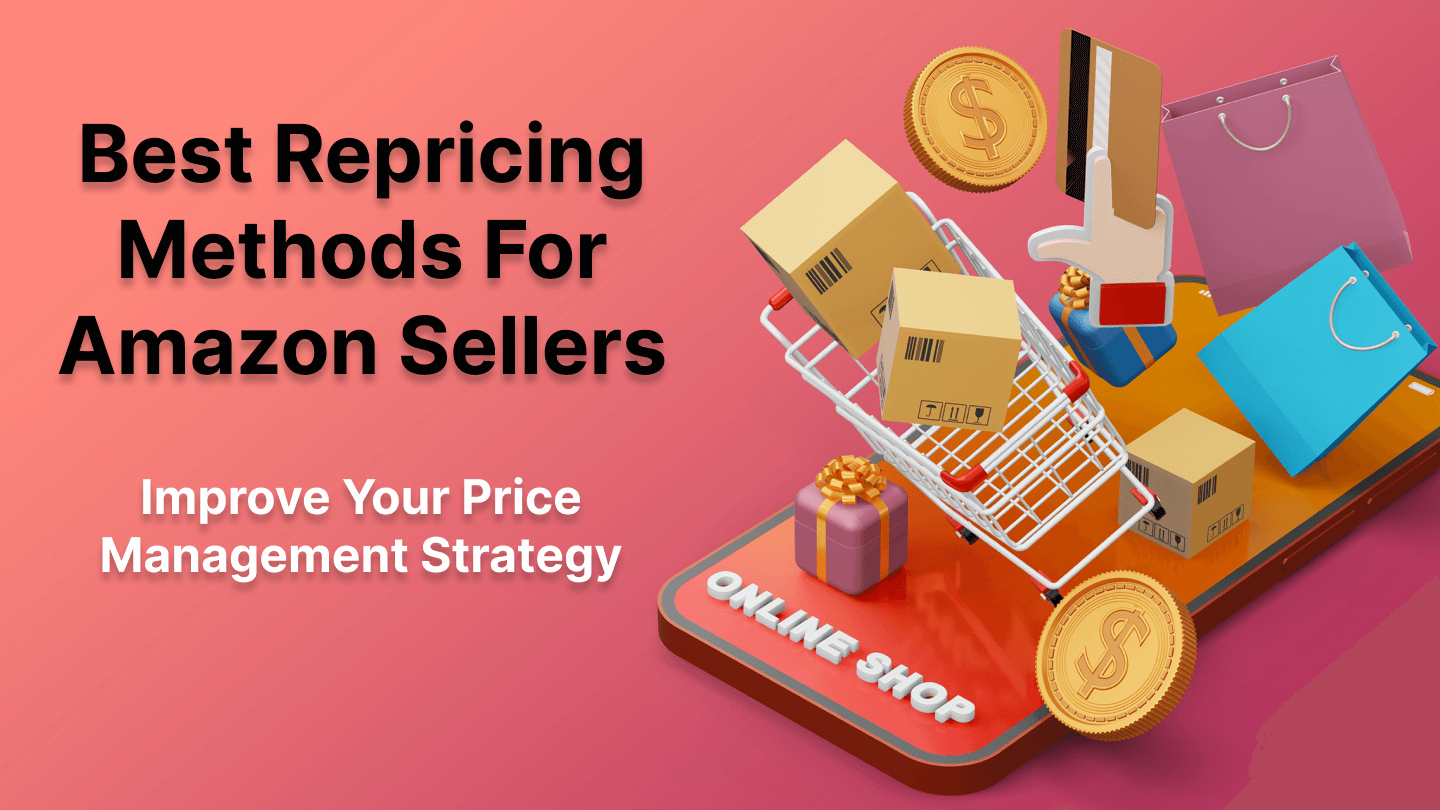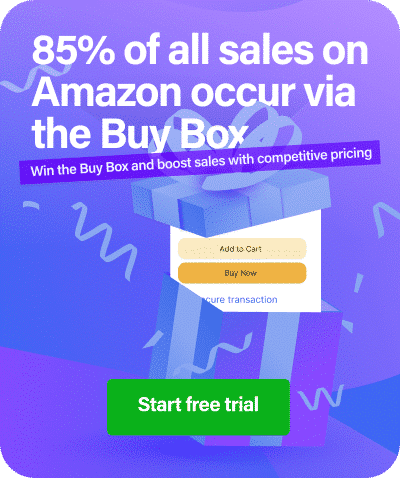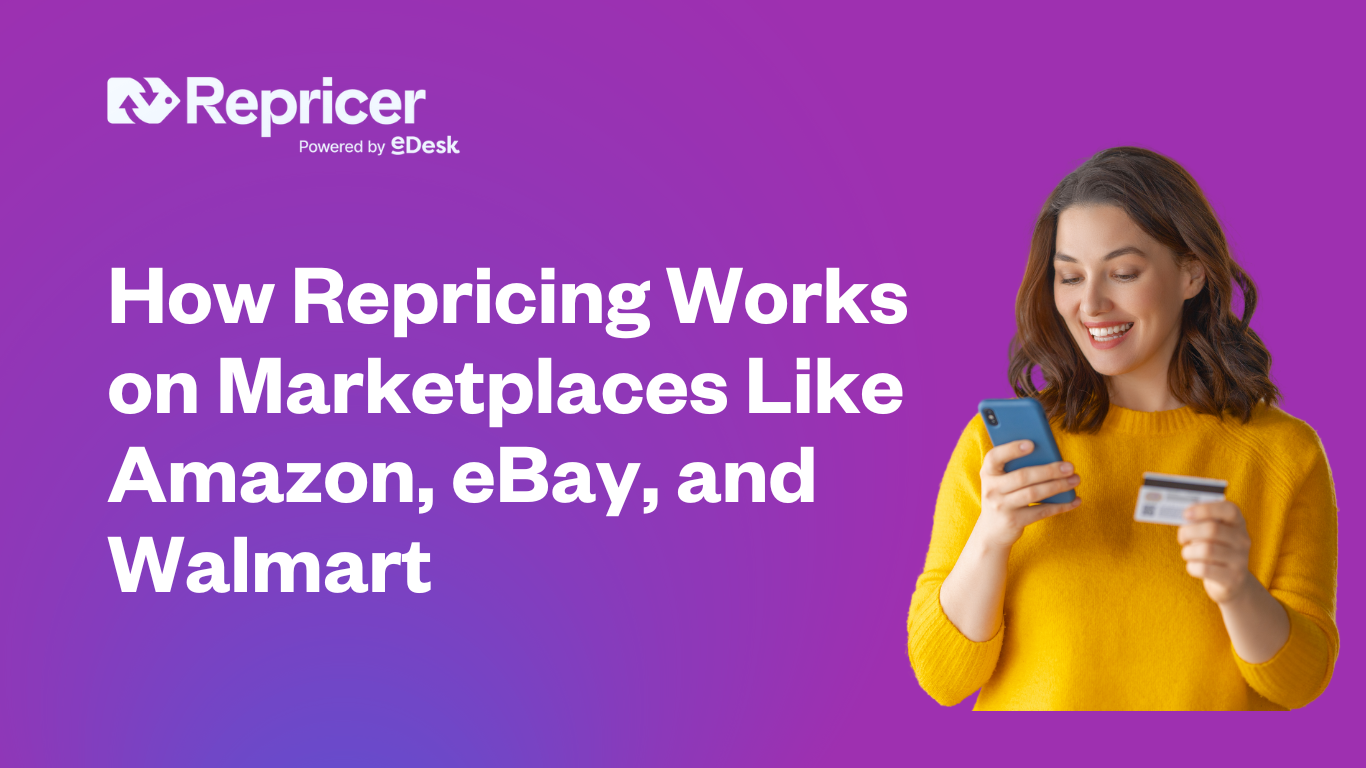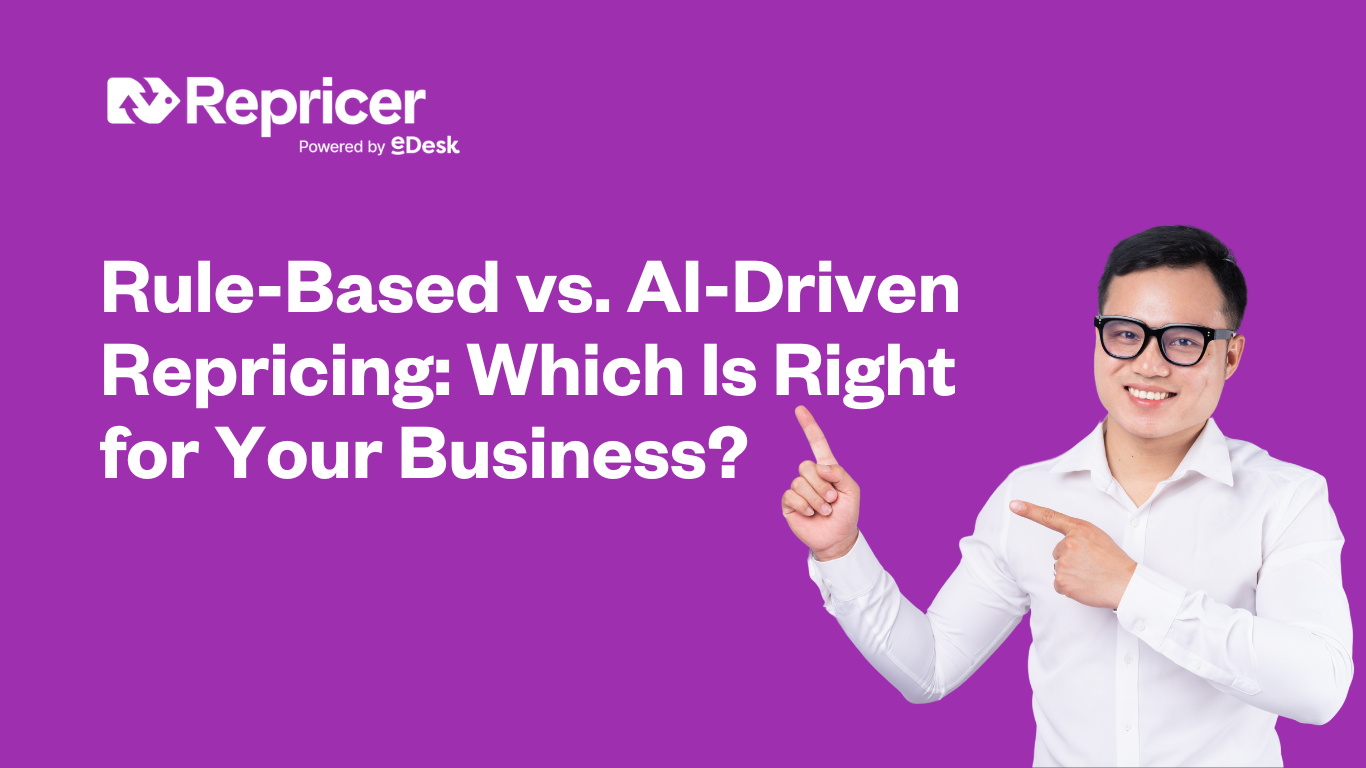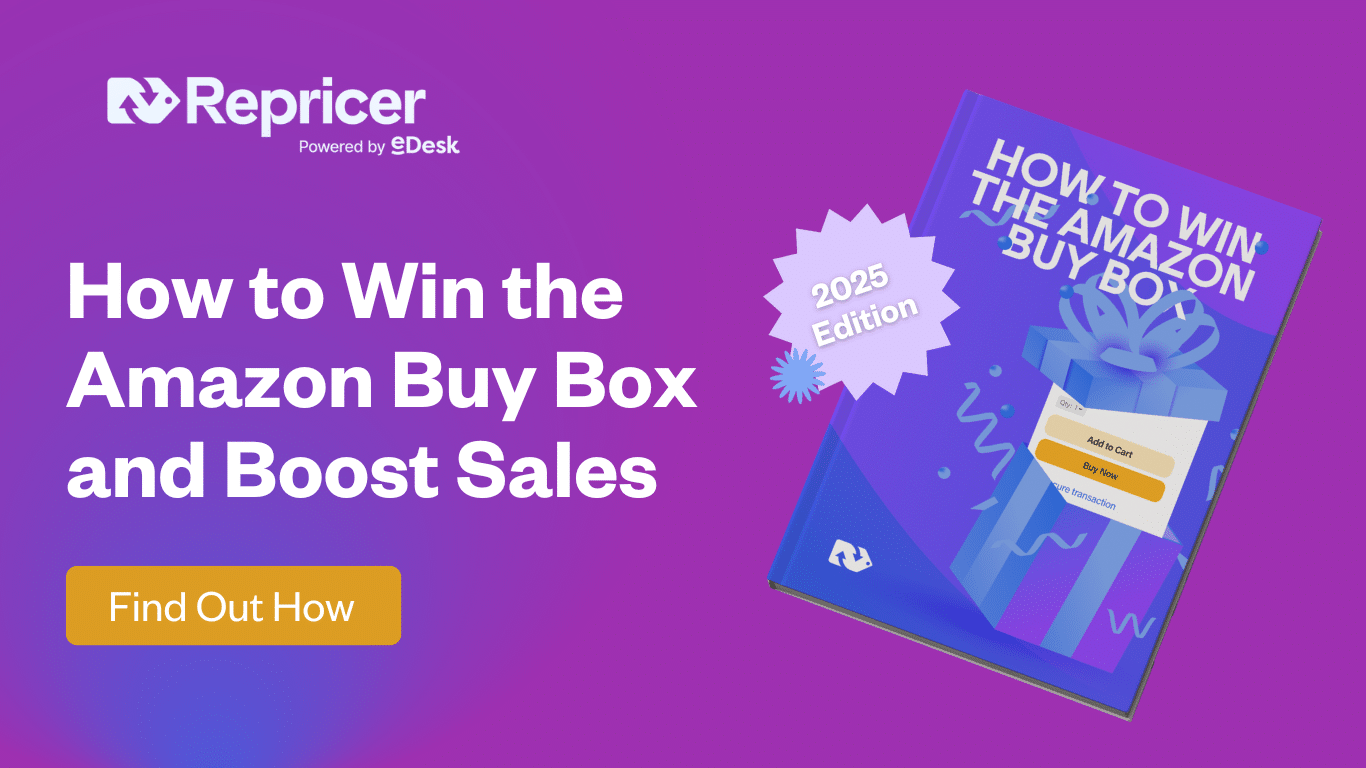If you’re selling on Amazon, you need to make sure you have a solid price management strategy in place.
One of the worst things you can do is decide on a price for your product, set it, and forget it. Do this, and you’re almost certainly missing out on profits.
But price management can be a complex area, especially for new sellers. You need to sell at a price that maximizes your sales and boosts your overall profits, but this price isn’t set in stone.
Repricing is where you change the price of your products to increase sales and profits. But it’s not just about being the cheapest seller.
Here, we’ll look at some of the best Amazon repricing strategies and how to make the most out of them to increase profits and grow your business.
TL;DR
- Price management is important on Amazon to increase sales and profits.
- You can use various repricing methods to improve your price management strategy.
- These include competitor pricing, setting a minimum price, and repricing based on inventory.
- Automated repricing software like Repricer maximizes your strategy to boost efficiency as well as profits.
Why Is Price Management So Important?

Here’s something you don’t need anyone to tell you: competition on Amazon is fierce.
Whether you’re just starting out on Amazon or your results have been less than stellar recently, effective price management is crucial.
The simple fact is that price matters to customers.
It’s not the only factor, of course. Customer service, branding, reputation, etc., are all important too. But you can do everything else right (have a great product, an optimized listing, and a solid marketing strategy in place) and still miss out on sales without good price management.
The right pricing strategy can also help you win the Buy Box, leading to a huge boost in sales. This is where most sales are made, and the price is a major factor in getting into this position.
But price management is more than just setting the lowest price you can to maximize sales. Sure, customers love paying less on Amazon. They’ll compare products, and if yours are priced too high, you could miss out on many sales.
But if you always provide the lowest prices, you could hurt your profits and make your products appear to be lower quality than they really are.
You need to find the right balance. With that in mind, what are the best price repricing strategies on Amazon?
Beat Your Competitors’ Prices
Competitor-based pricing is a popular strategy. This is a good starting point for many sellers.
The idea, as the name suggests, is that you find out what your competitors are charging and then base your prices on these. Ideally, you undercut them or keep your prices to within a couple of percentage points of their prices.
This strategy tends to be more useful for resellers rather than private label sellers because there’s often nothing to separate your products from those of your competitors.
You also need to keep a close eye on your competitors and know what they’re doing so you can quickly react if they put their prices up or down.
Automated repricing software does this for you. For example, if your competitor runs out of stock, the software can increase your prices to take advantage of the increase in demand.
Always Set a Minimum
Taking on your competitors by dropping your prices is fine, and it can definitely win you more sales. But what happens when other sellers drop their prices much further than you’re prepared to go?
You don’t want to end up giving your products away, so you should always set a minimum price, whether you’re repricing manually or automatically.
Always work out your total costs, including the price you pay for the goods, advertising expenses, shipping costs, customs duties, and more, to work out your profit margin. Then use this to set your minimum cost.
This is easy with repricing software, where prices can be adjusted automatically within a set range.
You can also set a maximum. As mentioned already, if your competitor stops listing the product, you can immediately increase the price and boost your profit margin by charging up to your maximum price.
Make Incremental Buy Box Price Increases
Winning the Buy Box is a strategy in itself. Price plays a big role in this, but it also involves other factors like your reputation, shipping time, fewer returns, lower cancellation rate, and so on.
You can use a repricing strategy to help you win the Buy Box—but you can also use a repricing strategy after you have won it.
When you win the Buy Box, you’re in a great position. But don’t relax and congratulate yourself just yet.
You can use a repricing strategy here to boost profits by incrementally increasing your price. You’re getting more eyes on your product and more demand, and that can allow you to experiment with the price by increasing it.
Again, the right repricing software can do this automatically, so you can boost your profits with very little effort.
Don’t Compete With All Sellers
You need to compete with other sellers, but not all of them. This is just a race to the bottom.
Instead, choose your competitors carefully. For example, don’t compete with non-FBA sellers if you’re an FBA seller.
Think about the condition of your products too. Don’t compete with new products if you sell used products.
Set your repricing rules based on these factors and avoid wasting time competing with the wrong sellers.
Find Out The Maximum You Can Charge
Customer-based pricing, or value-based pricing, is a possible option for private label sellers. In this case, you’re not competing directly with other sellers for the same product.
The idea is that you can price your product at what your customers are prepared to pay. The trick is to find the right price—and repricing can help.
You may start by setting a price that you think is fair. But don’t just stick with this. Even if you face no direct competition, use repricing software to react to market demand and increase the pricing accordingly to find out how much you can charge.
This will boost profits at the same time as increasing the perceived value of the product. Of course, your target customers might not always want to pay the maximum price you determine they are prepared to pay. Many events will affect selling prices (e.g. Black Friday), so it’s important to remain flexible.
Reprice Based on Inventory

Penetration pricing is one of the most popular Amazon pricing strategies. Simply put, it involves putting your prices down temporarily. It’s a popular tactic with new brands that want to penetrate the market, especially when running promotions.
Another time to lower your product prices is when your inventory is high. Perhaps you’ve got too much inventory, and you want to shift it. You can reprice your products based on this.
At the same time, lowering your prices can help to win you the Buy Box sooner, generate more interest in your products, and build brand recognition.
How Repricing Software Can Maximise Your Repricing Strategy
Now that we’ve looked at a few of the most popular repricing strategies, you may be wondering how exactly to choose between them.
But you don’t have to stick with one—you could use many strategies at different times. It depends on your products, the time of year, and many other factors.
These strategies all involve changing the price at certain times. Whether dropping the price to get rid of excess inventory, increasing the price incrementally when you win the Buy Box, or taking on your competitors by dropping your price when they do the same, you have to know when to lower or increase your prices.
These days, however, you can do a lot of the work automatically. All that monitoring and price changing can quickly add up to a lot of time and effort on your part, and this is where repricing software comes in.
Why Not Manual Repricing?
Manual repricing may be an option for some sellers. It gives you full control over your list prices and provides you with insight into what your competitors are doing.
However, you have to really know what you’re doing and be proficient to make it worthwhile.
Even if you’re good at it, you could end up spending a lot of time checking the prices of your competitors, which can affect how much time you can spend on other areas of running your business.
Automatic repricing does everything you can do with manual pricing and a lot more, all while saving you a lot of time and hassle.
Pros and Cons of Repricing Software
Pros
- Saves a lot of time that you can spend on running your business, researching products, customer research, marketing, etc.
- Maximize ROI and profits
- Manage multiple listings with very little effort.
- Set your own rules to have full control over your prices.
Cons
- Repricing software costs money, usually in the form of a monthly or annual subscription.
- You may be less aware of what is going on with your products and your competitors when everything is done automatically.
How Repricer Can Help
Using repricing software like Repricer is one of the most effective ways of managing your prices.
Amazon already has a free tool you can use to adjust prices automatically based on market conditions and customer demand. But it’s nowhere near as powerful as repricing software like Repricer.
With Repricer you can:
- Target your biggest competitors individually
- Spy on your main rivals
- Keep an eye on the Buy Box and see who is winning it
- Reprice based on the price of your products and sales history
- Price up and down based on your stock levels
- Speed up sales when inventory is moving slowly
- Increase the price when you win the Buy Box
- Ignore sellers who sell at a price below your minimum
Essentially, dedicated repricing software gives you a lot more control over your pricing so you can maximize your price management strategy.
Conclusion
As you can see, price management is a big area. There’s no one repricing strategy that can be deemed to be the best, and it depends on many factors related to your business and products.
You may opt for a strategy whereby you continually undercut your competitors, or you might want to put all your effort into winning the Buy Box.
There’s a good chance you’ll adopt various strategies depending on your products, the time of year, supply and demand, and more.
Remember that you can make use of tools that automate much of the process. Repricer allows you to hand over your repricing while you get on with running your business.
Whatever you do, don’t just list a price and stick to it. Take the time to carry out competitor research, use a tool like Repricer to give your product prices the edge, and boost both sales and profits on Amazon.
